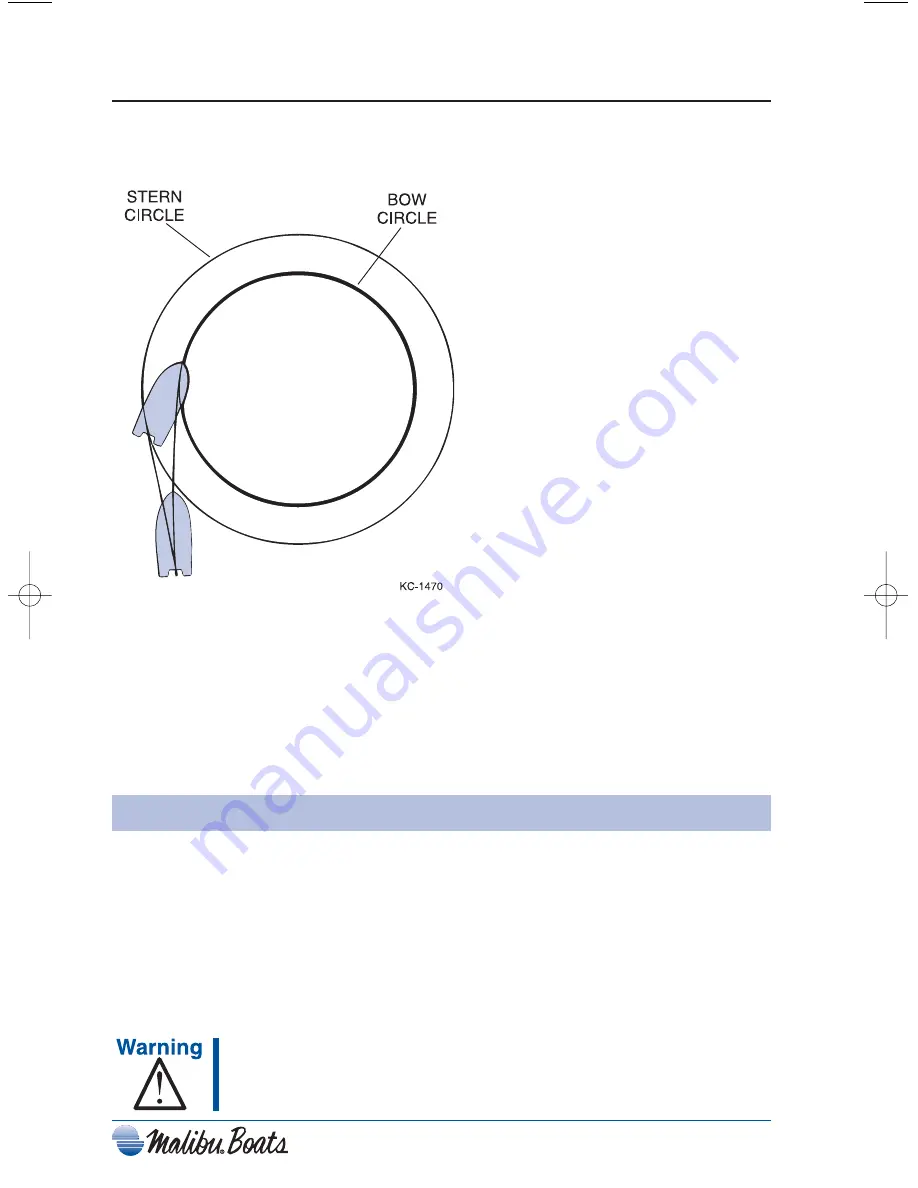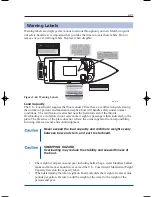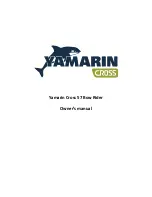
3-8
Maneuvering Techniques
Steering response depends on three factors: engine position, motion and throttle.
Like an automobile, high speed
maneuvering is relatively easy and
takes little practice to learn. Slow
speed maneuvering, on the other
hand, is far more difficult and
requires time and practice to master.
When making tight maneuvers, it is
important to understand the effects of
turning. Since both thrust and
steering are at the stern of the boat,
the stern will push away from the
direction of the turn. The bow
follows a smaller turning circle than
the stern.
The effects of unequal propeller
thrust, wind, and current must also be
kept in mind. While wind and current
may not always be present, an
experienced boater will use them to
his advantage. Unequal thrust is an
aspect shared by all single engine propeller-driven watercraft. A clockwise rotation
propeller tends to cause the boat, steering in the straight ahead position, to drift to
starboard when going forward, and to port when going backward. At high speed, this
effect is usually unnoticed, but at slow speed; especially during backing, it can be
powerful. For this reason, many veteran boaters approach the dock with the port side of
the boat toward the dock, if possible.
Stopping
When stopping the boat, it is important to remember there are no brakes to allow coming
to a complete, immediate stop. To stop your boat, anticipate ahead of time and begin
slowing down by pulling back on the throttle.
Once the throttle is in neutral and the engine has stopped pulling the boat forward, it may
be necessary to pull the throttle into reverse to further slow the forward momentum of the
boat. The reverse thrust of the engine will decrease the forward speed and slow the boat
down to a safer maneuvering speed.
Do not use the engine stop switch for normal shut down.
Doing so may impair your ability to re-start the engine quickly
or may create a hazardous swamping condition.
Figure 3-8. Stern Push
Chapter 3 doc.qxd 8/17/04 3:10 PM Page 8
















































